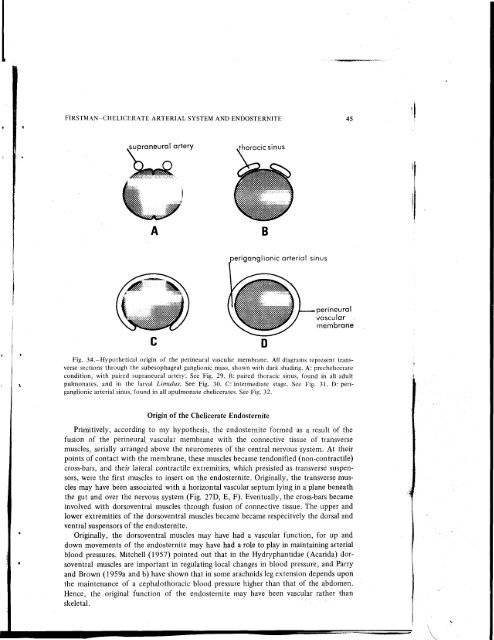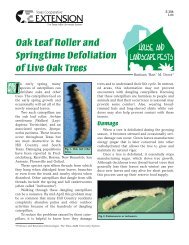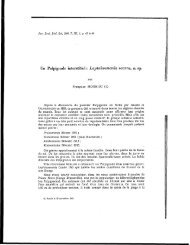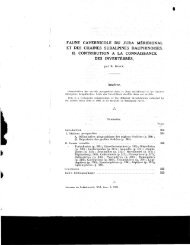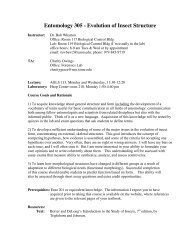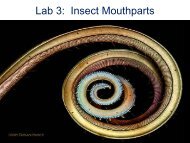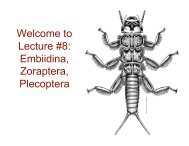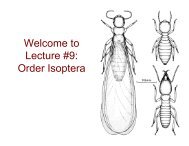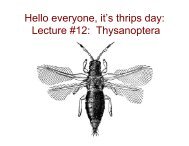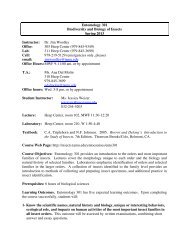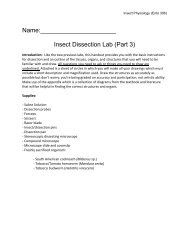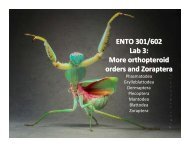THE RELATIONSHIP OF THE CHELICERATE ARTERIAL SYSTEM ...
THE RELATIONSHIP OF THE CHELICERATE ARTERIAL SYSTEM ...
THE RELATIONSHIP OF THE CHELICERATE ARTERIAL SYSTEM ...
Create successful ePaper yourself
Turn your PDF publications into a flip-book with our unique Google optimized e-Paper software.
FIRSTMAN-<strong>CHELICERATE</strong> <strong>ARTERIAL</strong> <strong>SYSTEM</strong> AND ENDOSTERNITE 45supraneural arteryvthoracic sinusBperiganglionic arterial sinusperineuralvascularmembraneFig. 34.-Hypothetical origin of the perineural vascular membrane. All diagrams represent transversesections through the subesophageal ganglionic mass, shown with dark shading. A: precheliceratecondition, with paired supraneural artery. See Fig. 29. B: paired thoracic sinus, found in all adultpulmonates, and in the larval Limulus. See Fig. 30. C: intermediate stage. See Fig. 31. D: periganglionicarterial sinus, found in all apulmonate chelicerates. See Fig. 32.Origin of the Chelicerate EndosternitePrimitively, according to my hypothesis, the endosternite formed äs a result of thefusion of the perineural vascular membrane with the connective tissue of transversemuscles, serially arranged above the neuromeres of the central nervous System. At theirpoints of contact with the membrane, these muscles became tendonified (non-contractile)cross-bars, and their lateral contractile extremities, which presisted äs transverse suspensors,were the first muscles to insert on the endosternite. Originally, the transverse musclesmay have been associated with a horizontal vascular septum lying in a plane beneaththe gut and over the nervous System (Fig. 27D, E, F). Eventually, the cross-bars becameinvolved with dorsoventral muscles through fusion of connective tissue. The upper andlower extremities of the dorsoventral muscles became became respecitvely the dorsal andventral suspensors of the endosternite.Originally, the dorsoventral muscles may have had a vascular function, for up anddown movements of the endosternite may have had a role to play in maintaining arterialblood pressures. Mitchell (1957) pointed out that in the Hydryphantidae (Acarida) dorsoventralmuscles are important in regulating local changes in blood pressure, and Parryand Brown (1959a and b) have shown that in some arachnids leg extension depends uponthe maintenance of a cephalothoracic blood pressure higher than that of the abdomen.Hence, the original function of the endosternite may have been vascular rather thanskeletal.


